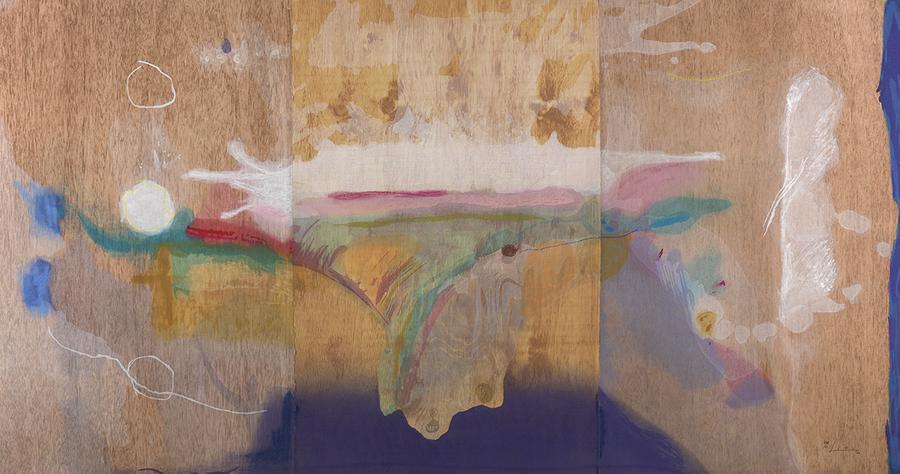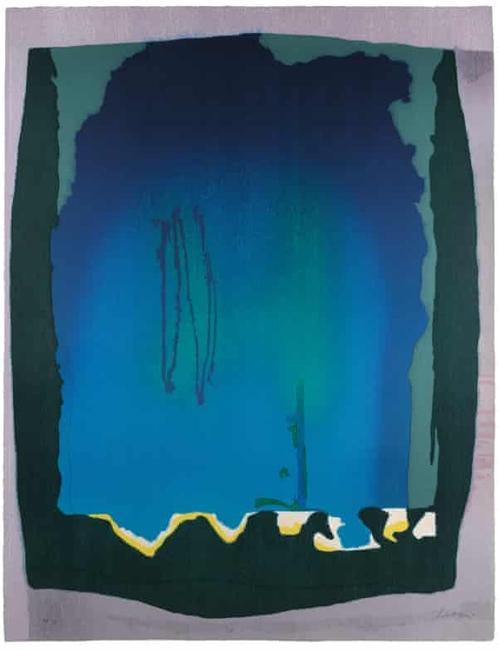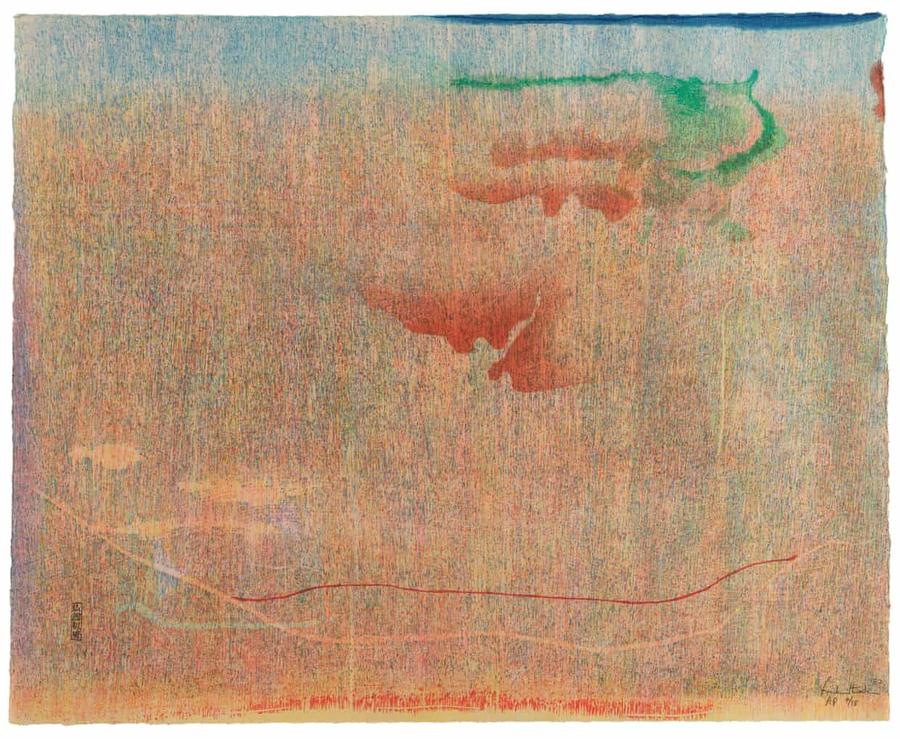
Through April 18, 2022, the UK's Dulwich Picture Gallery brings together a major exhibition of woodcuts by the leading Abstract Expressionist, Helen Frankenthaler (American, 1928-2011). Shining a light on her groundbreaking woodcuts, Helen Frankenthaler: Radical Beauty showcases the artist as a creative force and a trailblazer of printmaking, who endlessly pushed the possibilities of the medium.
Ranging from Frankenthaler’s first ever woodcut in 1973, to her last work published in 2009, this major print retrospective brings together 30 works on loan from the Helen Frankenthaler Foundation, including Madame Butterfly (2000) and East and Beyond (1973) to reveal the enormous diversity in scale and technique in her oeuvre. Challenging traditional notions of woodcut printmaking, the exhibition will reveal the charge and energy behind Frankenthaler’s ‘no rules’ approach, arranged thematically to spotlight the elements crucial to her unique style of mark-marking, from experimentation to inspiration and collaboration.

At the age of only 23 Frankenthaler created her influential oil painting Mountains and Sea (1952), the first work produced using her signature soak stain technique - pouring thinned paint directly onto canvas from above to create broad expanses of translucent color. It was a breakthrough that would propel Frankenthaler into the spotlight of the New York art scene at a time where Jackson Pollock and Willem de Kooning dominated. This technique went on to influence the artists of the Color Field school of painting, including Morris Louis and Kenneth Noland, and had a profound impact on her printmaking career.
Opening ten years after her death, ‘Radical Beauty’ examines Frankenthaler’s revolutionary approach to the woodcut, positioning her as one of the medium’s great innovators. In the same way as she did with her earlier paintings, Frankenthaler defied the limitations of what is often considered the most rudimentary of printmaking techniques; she found new dimensions to the medium, experimenting with different orientations and colourways, and a variety of new tools and methods. What resulted is an incomparable body of work, where prints appear painterly and spontaneous with expanses of colour and fluid forms.
Highlights include Frankenthaler’s first woodcut East and Beyond (1973) created by printing onto multiple blocks to avoid negative space. The work holds a sense of tangible colour and form, but at the same time has a fluidity that sets it apart from other artists at the time such as Jasper Johns. Other standout works will include Cameo (1980) and Freefall (1993), which further demonstrate how Frankenthaler accepted the challenge of woodcut printmaking and found ways to make it yield to her approach. In Cameo, Frankenthaler introduced a new layered approach to colour and used her distinctive “guzzying” technique – where she worked her surfaces with sandpaper and in some instances, dentist drills, to achieve different affects.

A key focus of the exhibition is Frankenthaler’s masterpiece, Madame Butterfly (2000). Sharing its title with the 1904 opera by Giacomo Puccini, the triptych’s light pastel colours and stained marks show Frankenthaler at her most expressive and lyrical. Created in collaboration with Kenneth Tyler and Yasuyuki Shibata from 46 woodblocks and 102 colours, the work measures over two metres in length and will occupy an entire room in the exhibition, along with a work proof and study to explore the complexity of its evocative title. In this print, and in others in the exhibition we can also understand Frankenthaler’s working process and how each collaboration propelled her forward creatively. The exhibition will include all six woodcuts of the series Tales of Genji (1998), a highly ambitious body of work for which Frankenthaler employed her soak-stain technique– this time painting with water-based colours onto sheets of plywood. Working with Tyler and his studio of printmakers once again, they embarked on a process of constant experimentation and a journey of trial and error to achieve Frankenthaler’s vision.
Jane Findlay, Exhibition Curator and Head of Programme & Engagement at Dulwich Picture Gallery, notes,"There is something magical about how she breathes life into such a rigid medium, retaining the energy and dynamism - that born at once feeling - that you see in her painting."